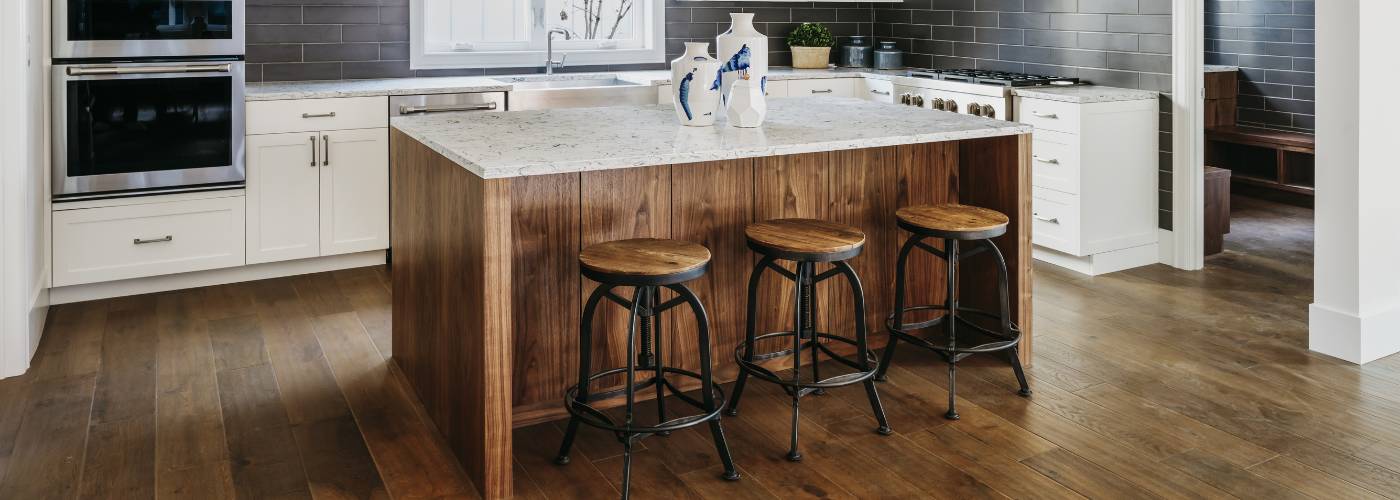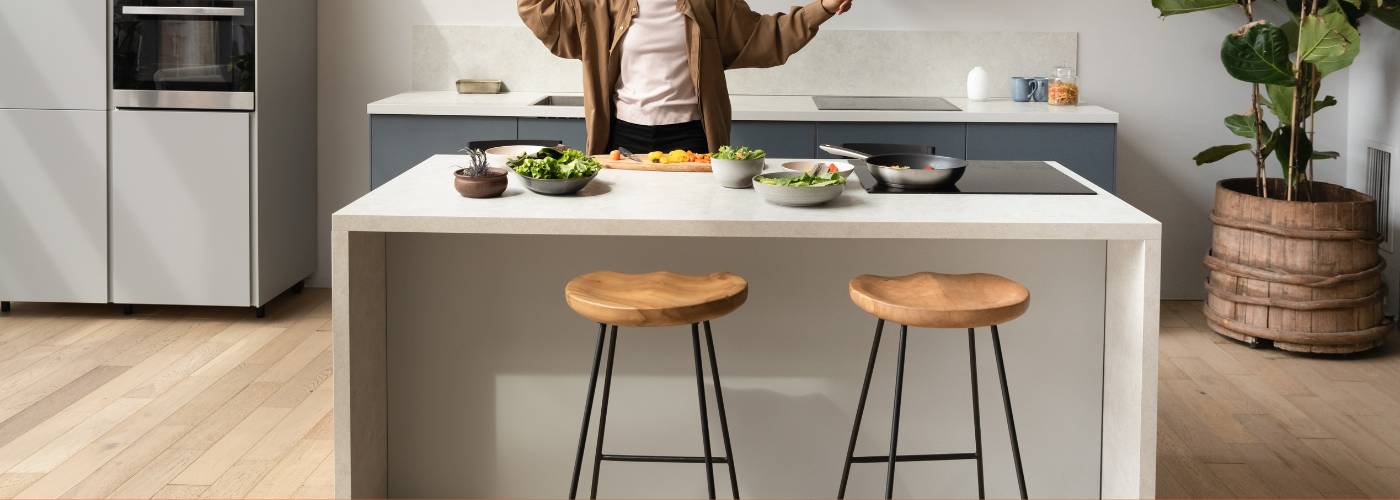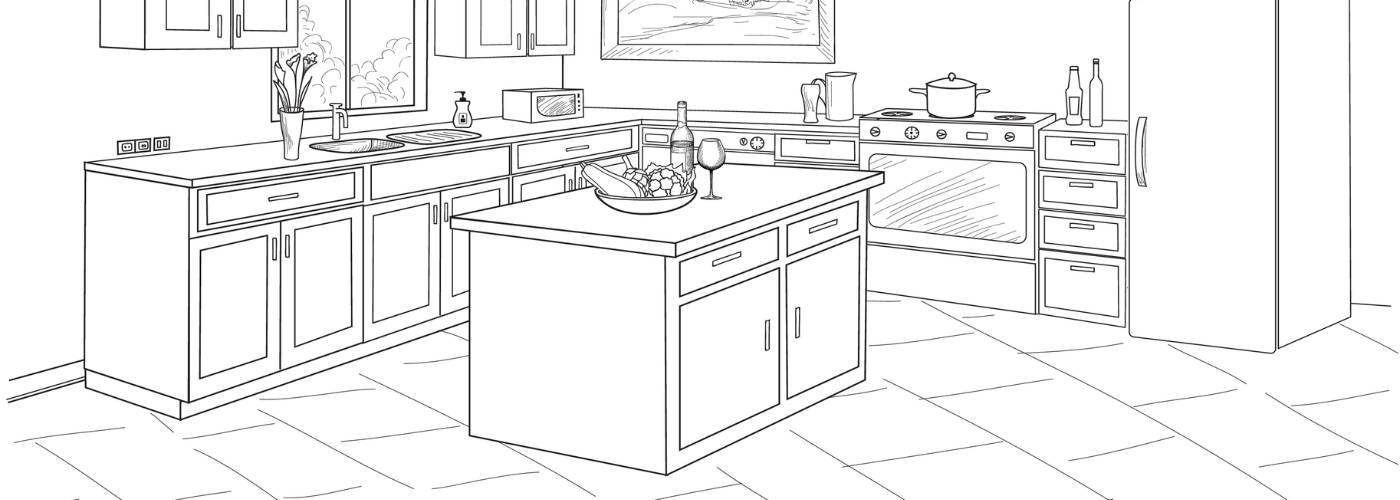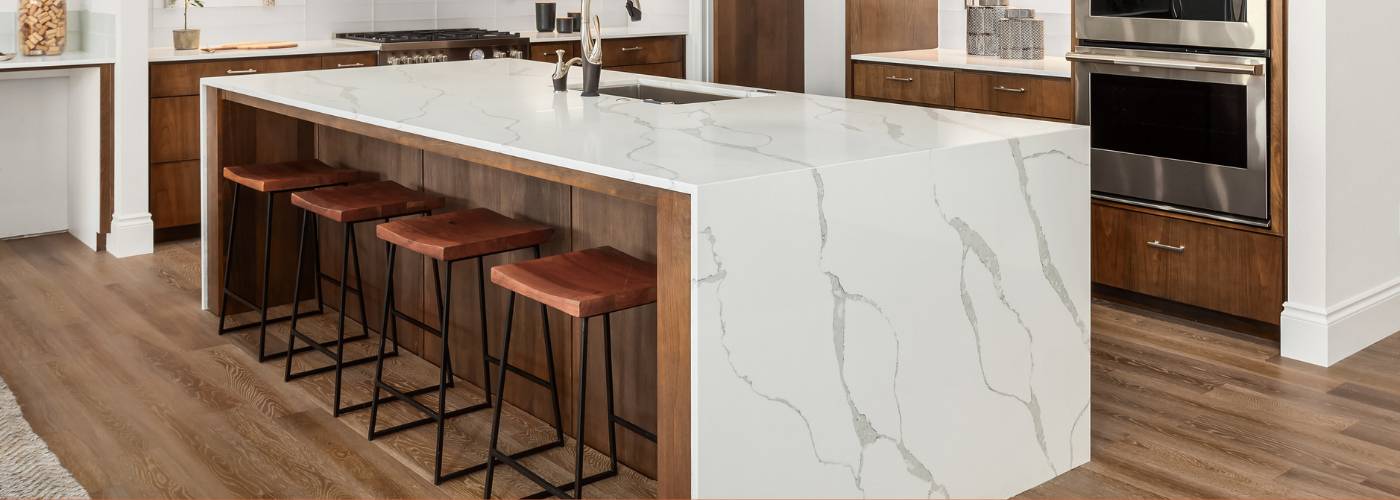Having a kitchen island in your home can be a great way to add additional workspace and storage to your kitchen. Not only is it functional, but having an eye-catching island can also be aesthetically pleasing. Our guide to kitchen islands will provide you with plenty of information on the different types of islands.
What Is A Kitchen Island?

A kitchen island is a great way to maximize the use of your kitchen space and add both style and functionality. Whether you’re looking for extra seating or an additional workspace, a kitchen island can be the perfect kitchen remodel project to any home.
Typically, a kitchen island is an independent structure that is located in the middle of your kitchen and provides additional countertop and storage space. They come in all shapes and sizes, with some even having features such as built-in stoves, sinks, cutlery drawers, pull-out shelves, wine racks and more. Depending on your needs, you can find a variety of stylish options to choose from.
Kitchen islands are also quite versatile; they can act as the main gathering spot for family meals or provide extra storage for those who don’t want their items taking up valuable counter space.
How Tall Should A Kitchen Island Be?

When designing a kitchen, one of the most important elements to consider is the height of your kitchen island. A well-designed kitchen island will be an asset to any home, but it must fit in with its surroundings and be comfortable for use.
To ensure your kitchen island matches both aesthetic and ergonomic goals, there are a few considerations you should keep in mind.
First, consider the standard countertop height of 36 inches when deciding on how tall your kitchen island should be. This will suit most people using the space comfortably as this is considered to be an ergonomically correct height that allows enough space for working without having to bend over or strain too much.
Also, if you are tall, you may want to raise the height by 2 or 3 inches for added comfort. If you are shorter, lower the height of your kitchen island to make it more comfortable for you. You should also choose a design that suits your kitchen style and color scheme.
How To Design A Kitchen Island

Creating a kitchen island is the perfect way to add more storage, counter space, and seating to your kitchen. Kitchen islands allow you to prep your meals in the kitchen without interrupting the conversation or company of your guests.
In order to design an eye-catching and functional kitchen island, there are several important considerations that must be taken into account.
First, consider your budget and how much you are willing to invest in materials and labor for your new island.
Second, think about how much countertop space you want or need in order to accommodate food prep and other activities.
Finally, decide if you want any additional features such as a sink or cooktop on your island. Once you have established these criteria, it’s time to begin choosing the material for your kitchen island. Popular choices include wood, stainless steel, tile or stone countertops.
All of these materials and styles make great for a home remodel project.
Should Pendant Lights Be Centered To Kitchen Islands?
When it comes to kitchen design, there are many details that need to be considered. One of these elements is the placement of pendant lights over the kitchen island. Should they be centered or moved off-center? This is a common debate among interior designers and homeowners alike.
Centering pendant lights gives the illusion of symmetry and creates a pleasing visual effect, while offsetting them can provide greater flexibility in terms of where and how much light you need in each area.
Off-centering also allows for easier access to items on the countertop, as well as providing an interesting accent to your kitchen design. Ultimately, the decision should be made with both aesthetic preference and practicality in mind.
